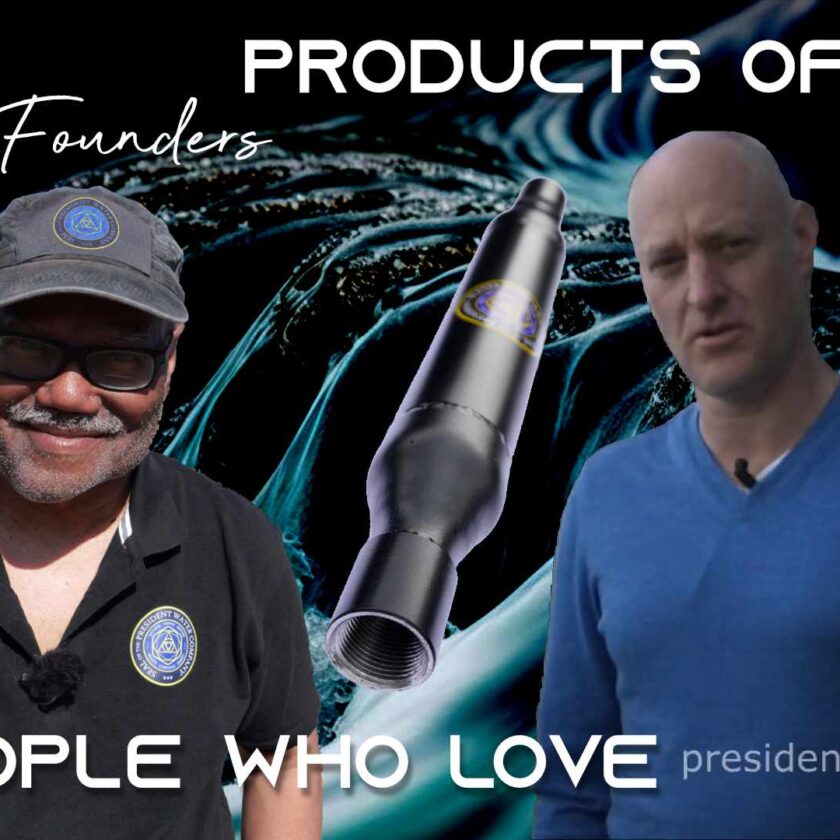It would be impossible to convey, even in a few thousand words, the profound shift that has occurred in my thinking as a result of ongoing interactions with Grant Maanum. Our conversations haven’t been limited to matters of MMS in the least. However, the importance of what MMS can do for humanity is so great that it behooves us to take a critical look at any measure that could possibly compromise it, even before getting to the main issue at hand, which is the multifaceted disintegration of the Human DNA at the hands of an unwitting orthodox science through its promulgation of the HeLa cell and derivative technologies.
In the process of discovering this threat, and because of it, Grant has invested quite a bit of time and energy to help people better understand, and hence get the best results from their MMS use with no economic motive or compensation whatsoever. He has done so, not by attempting to establish himself as the new arbiter of methods, but to call the public’s attention to a clinically proven and scientifically confirmed approach that could act as a reliable, science-based baseline. That has not been an easy task. But then, I can think of few worthwhile tasks where the term “easy” applies.
We have discussed the matter of adding baking soda to MMS. More thoughts have been recorded. A question as to the chemical efficacy of the new Chlorine Dioxide Solution (CDS) protocol developed by Andreas Kalcker has also been raised, though not commented on here as of yet. I’m not here to judge anyone. I simply want the products that people take to actually give them what they are seeking, secure in the knowledge that we’ve dotted every “I” and crossed every “t”. Chemically speaking, there is a difference between chlorine dioxide and its ionic counterpart that we need to know and understand. This is not a commercial application, but for a living biological system.
In each of these approaches, “successes” have been observed and reported. However, true success means being able to answer what can sometimes be a long list of questions in a satisfactory manner. Thanks to Grant I am beginning to see new questions to ask, based on his 10+ years of study. The town where he lives is one of the largest producers of industrial chlorine dioxide in the world. He has experienced, first hand, both the harmful effects of chlorine dioxide (ClO2) toxicity and the curative/restorative effects of the chlorite matrix (ClO2-).
Most people are unaware that there is a difference within the chemical species that is chlorine dioxide. I certainly didn’t know it. Most are unaware that much of the curative activity that needs to happen when a metabolic dysfunction turns into a full-blown disease, occurs within the cell. My view of chlorine dioxide was as a cluster of oxygen-equipped warriors that entered the body and destroyed the low voltage, anaerobic overgrowth that they encountered by commandeering up to five electrons from their microscopic-sized “enemies.”
Now, intracellular environments, requirements, and dynamics must be considered, as well as the extracellular, and in spite of the many detractors against MMS who call it “bleach”, the chlorine ion (Cl–) is of critical importance to the proper inner workings of every cell. Specially in the presence of, but not limited to, the chlorite matrix (ClO2-).
Why is this important?
The importance in all this is in the fact that the chlorite matrix (ClO2-) is a vital and necessary ingredient in the proper functioning of the Krebs Cycle, which is routinely compromised by the preponderance of nutrient deficient and chemically processed products that we consume or are exposed to. Just take a shower each day and you prove my point. Vaccines, genetic engineering, fracking, “smart meters,” and many other “technological advancements” exacerbate an already dicey situation, health-wise. In MMS, as originally formulated, Jim Humble gave us a way to economically produce the chlorite matrix (ClO2-). However, we – or at least I have thought that chlorine dioxide (ClO2) was the same thing.
According to the Cornford, Frost, Herring & McDowell (1971) work, ClO2 is produced when you add acid – they used acetic, but it works with citric, lactic, ascorbic, and humic acids too. The chlorine dioxide, which normally lasts 300,000 years due to its very tight bonding, was broken up in an instant by the acid, which essentially removed the “radical” character of the molecule, leaving the part that can repair and heal; the chlorite matrix (ClO2-).
Here’s more about chlorine dioxide, from the EPA’s Guidance Manual, dated April 1999:
Chlorine dioxide (ClO2) is a neutral compound of chlorine in the +IV oxidation state. It disinfects by oxidation; however, it does not chlorinate. It is a relatively small, volatile, and highly energetic molecule, and a free radical even while in dilute aqueous solutions. At high concentrations, it reacts violently with reducing agents. However, it is stable in dilute solution in a closed container in the absence of light (AWWA, 1990).* Chlorine dioxide functions as a highly selective oxidant due to its unique, one-electron transfer mechanism where it is reduced to chlorite (ClO2-) (Hoehn et al., 1996).
The pKa for the chlorite ion, chlorous acid equilibrium, is extremely low at pH 1.8. This is remarkably different from the hypochlorous acid/hypochlorite base ion pair equilibrium found near neutrality, and indicates the chlorite ion will exist as the dominant species in drinking water. The oxidation reduction of some key reactions are (CRC, 1990):
*This chlorine dioxide was produced by interacting sodium chlorate (NaClO3) and the very harsh sulfuric acid.
Notice that chlorite is acknowledged as its own distinct identity, described chemically as “ClO2-.” Chlorine dioxide (ClO2) becomes chlorite (ClO2-) via “reduction” with a specific form of acid when applied to a 28% Sodium Chlorite (NaClO2-) solution. The acid does two things:
- separates the chlorine dioxide (ClO2) from the sodium (Na)
- reduces it to chlorite (ClO2-)
If there is absolutely NO sodium chlorate (NaClO3-) present in your source material, then you’re good to go. If there is, then chlorine dioxide will be present too.
The documents like the one excerpted from the EPA, which lays out ground rules for various methods of municipal water treatment may go the way of the dinosaur, as critical information, such as how sodium chlorate must not be present, is coming up missing. It has happened before, as “history” is constantly being revised.
I’ve examined Material Safety Data Sheets (MSDS) for 80% sodium chlorite that MMS producers use. In remaining approximately 20%, sodium chloride (NaCl or salt), sodium carbonate (Na2CO3), and sodium sulfate (Na2SO4) are present in varying percentages. I found small amounts of sodium chlorate (NaClO3) from one Asian source. NO amount of sodium chlorate is ever acceptable.
The Cornford tests were performed with 99% pure sodium chlorite. Barring that, the sodium chlorite that the producer uses to produce MMS must contain NO sodium chlorate.
In order to begin to explain differences that some people have reported – specifically related to extreme reactions – a standard must be understood to exist among MMS producers, even to the point of ensuring that their source sodium chlorite is of such a quality as to have NO sodium chlorate. This helps eliminate questions down the road.
One of the MMS suppliers in Europe, not knowing this, sent me his ingredient list because he wanted to know. It contained the following:
- Cloratos = Chlorate = Sodium Chlorate.
- NaClO = Sodium Chlorite.
- NaOH = Sodium Hydroxide.
- NaCl = Sodium Chloride
- Na2CO3 = Sodium Carbonate.
I sent it to Grant, who responded with the following analysis:
Yes, Sodium Chlorate is present, less than 8 g/L, and reacted produces ClO2.
NaOH is sodium hydroxide. We call it Lye.
NaOH will react with the citric acid, and because of being a strong base, the monosodium, disodium, and trisodium will fall away. The monosodium is then available to form MSG.
Na2CO3 is Sodium Carbonate, which produced exactly the same issues as sodium Bicarbonate when reacted. In fact, the chemical equation is EXACTLY the same.
So you may be getting a feel for how complex this is. With regard to the production, preparation, therapeutic and/or clinical use of chlorite (ClO2-), standards are needed among and within the MMS community that cover everything from material’s, product production standards and practices, to metabolic assumptions and outcomes. Perhaps it’s being done already, but there appears to be room for improvement.
New Context vs. the FDA Warning on MMS
If the conventions and controls recommended above are considered, observed and confirmed, this awareness would take the “danger” out of the FDA warning, which sounded an alarm about the production and consumption of chlorine dioxide. The FDA warning focused on chlorine dioxide because all the literature and presentations, mine included, said that this is what was being produced and getting the results. That was my best understanding of what I read and experienced. The amazing improvements that so many people have reported, along with Jim’s instruction and corroborating information I found, was good enough for me.
Grant’s discovery of the Cornford, et. al tests presented a plausible and documented alternative story about what was going on. Their emission spectroscopy results confirmed that no chlorine dioxide was present once the acetic acid activator was applied. Chlorine dioxide had been released for an instant, leaving chlorite behind in a stabilized form. The chlorite is safe, non-toxic, and therapeutic, and vital to the Krebs Cycle. It also destroys HeLa cells. This may not mean much to you now, but it will, once you know what HeLa cells are doing.
Chlorine dioxide cannot and will not help intracellular function. The chlorite ion is required for proper cell function. Oxo Chemie’s WF10 trials showed complete restoration of T-cell production and cell function in four patients who had advanced stages of HIV/AIDS, after a very specific program that spanned 9-weeks. All five of the listed acids are not required to achieve similar effects. However, I am acknowledging what has proven to worked before, proven scientifically, and will let it be my foundation for moving forward.
The effort to establish this bit of common ground regarding the productive use of MMS allows us to deal with real value that it represents, when properly prepared and administered; in its ability to destroy HeLa cells and the damage that they have been, and are doing to human DNA.









Thank you, thank you, thank you for the format change for the blog. sooooo much easier to read.